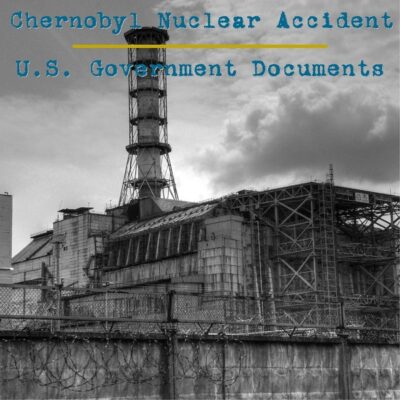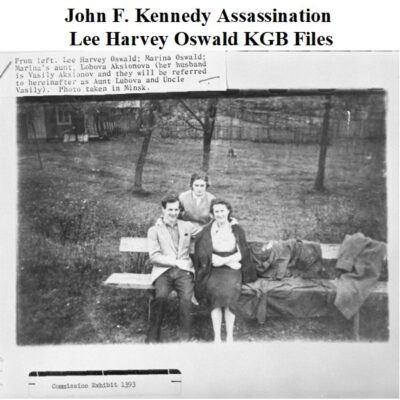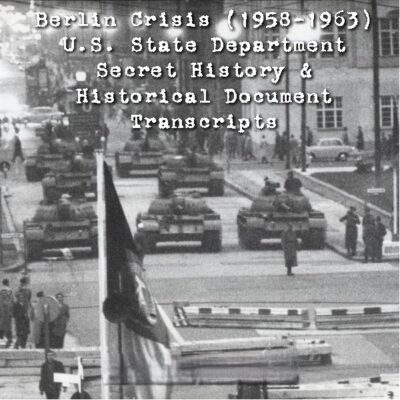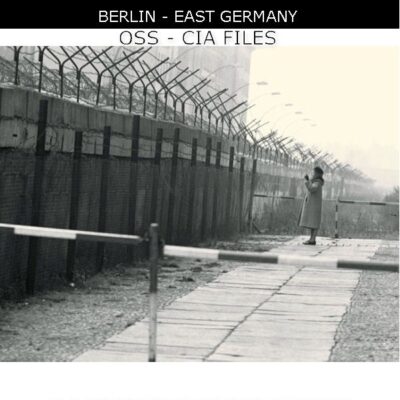
Soviet Luna Program: First Mooncraft – CIA Files
$19.50
Description
Timeline of Soviet Luna Program and Related Events
- 1958 – 1967: Period covered by government reports on Luna and the early Soviet space program.
- 1959 – 1971: Period covered by CIA files dealing with the Soviet Luna Programme.
- January 2, 1959: Luna 1 (Lunik 1) is launched and becomes the first spacecraft to reach the Moon. It subsequently orbits the Sun between Earth and Mars.
- May 1959: Hearings before the Committee on Science and Astronautics and Special Subcommittee on Lunik Probe are held by the U.S. House of Representatives, discussing Soviet Space Technology.
- September 14, 1959: Luna 2 becomes the first spacecraft to land on the Moon, impacting the lunar surface east of Mare Serenitatis. The mission confirms the Moon’s lack of a significant magnetic field and radiation belts.
- 1959/1960: The Soviet Union conducts an exhibition of its industrial and economic achievements in several countries, featuring models of Sputnik and Lunik spacecraft. It is later discovered that the Lunik model is a partially equipped actual spacecraft.
- 1959/1960 (Specific Date Unknown, during the exhibition tour): The CIA launches an operation to “kidnap” the Lunik spacecraft.
- Phase 1 (Overt): The CIA first gains access to visually examine the Lunik vehicle at one of the exhibition locations.
- Phase 2 (Covert): The CIA intercepts the craft while it is being moved between exhibition locations. CIA technicians then disassemble and reassemble the Lunik before returning it to transport.
- May 1961: The Library of Congress publishes a “Comprehensive Analysis of Soviet Space Program, Based on Soviet Open Literature, 1958-61.”
- 1962: The Library of Congress publishes “Surface and Atmosphere of the Moon Review of Soviet Literature.”
- 1969: The United States becomes the first nation to place a man on the Moon.
- November 2019: Some CIA material related to the Luna program, including details on the Lunik “kidnapping,” is declassified.
Ongoing Themes/Activities Throughout the Period:
- Soviet Propaganda: The Soviet Union engages in extensive reporting and propaganda about the Lunik missions and its space program to boost Khrushchev’s political standing and present a strong image.
- Intelligence Gathering: The CIA speculates on the possibility of Soviet claims being a hoax, and actively collects scientific and technological data from the Soviet space program, noting its applicability to the Soviet ICBM program.
- US-USSR Space Race Comparison: Continuous comparison of achievements in space science between the USSR and the U.S.
Cast of Characters
- Nikita Khrushchev: The leader of the Soviet Union during the early years of the Luna program. His political situation in the Soviet Union reportedly received a boost due to the success of the Luna missions.
- CIA (Central Intelligence Agency): A U.S. government agency responsible for gathering, processing, and analyzing national security information from around the world. In the context of the Luna program, the CIA actively monitored Soviet space advancements, speculated on their intentions, and undertook a significant covert operation to “kidnap” and examine a Lunik spacecraft.
- U.S. House of Representatives – Committee on Science and Astronautics and Special Subcommittee on Lunik Probe: Congressional bodies that held hearings in May 1959 to discuss Soviet Space Technology, indicating U.S. governmental interest and concern regarding Soviet space achievements.
- Soviet Union: The nation that launched the Luna program, a series of robotic spacecraft missions to the Moon. They were the first to place man-made objects on the Moon and achieved several significant “firsts” in space exploration.
- Western Media: A collective term for news outlets in Western countries, which often referred to the Luna program spacecraft as “Lunik” or “Lunnik.”
- CIA Technicians: Unnamed individuals within the CIA who were responsible for disassembling and reassembling the Lunik spacecraft during the “kidnapping” operation.
- Covert and Overt Intelligence Assets: Unnamed individuals and resources utilized by the CIA in their operation to gain access to and eventually “kidnap” the Lunik spacecraft.
Soviet Union – Luna Programme/Lunik First Lunar Spacecraft First to the Moon CIA Files
Documents from the Central Intelligence Agency pertain to the Soviet Union’s Luna Program, also known as Lunik, which sent the initial spacecraft to the Moon.
This collection comprises 1,441 pages of records concerning the Luna Program of the Soviet Union, responsible for launching Lunik 1, humanity’s inaugural artificial object, towards the lunar surface. Within these files, 861 pages are attributed to CIA records spanning 1959 through 1971, complemented by 579 pages of official government analyses describing the Luna initiative and the nascent stages of the Soviet space exploration efforts, originating between 1958 and 1967. Notably, these documents feature a CIA narrative detailing the agency’s alleged “seizure” of a lunar vehicle belonging to the Soviet program. Portions of the CIA-related content present here remained classified until November of 2019.
Although the United States successfully landed a person on the Moon in 1969, the Soviet Union had already initiated placing artificial objects on the Moon a decade earlier, starting in 1959. The Luna initiative, derived from the Russian term “Луна” (signifying “Lunar” or “Moon”), and frequently misidentified as Lunik or Lunnik by Western press outlets, constituted a succession of automated space missions dispatched to the Moon by the Soviet Union from 1959 to 1976. Each individual spacecraft was conceived either to orbit or to alight on the lunar surface, achieving numerous pioneering feats in the realm of space adventuring. Furthermore, these missions conducted extensive experiments, meticulously examining the Moon’s elemental makeup, gravitational pull, thermal conditions, and radiation levels. A total of twenty-four space vehicles officially received the Luna identifier, even though additional launches occurred. Spacecraft that did not successfully achieve orbit were not recognized publicly during that period and were consequently not allocated a Luna sequence number. On January 2, 1959, Luna 1 became the inaugural spacecraft to arrive at the Moon. Its trajectory placed it into a solar orbit, situated between the orbital paths of Earth and Mars. Luna 2 represented the second in a sequence of space probes propelled towards the Moon. This craft made history on September 14, 1959, by becoming the first to successfully impact the lunar surface, touching down east of Mare Serenitatis, in proximity to the Aristides, Archimedes, and Autolycus craters. This particular mission confirmed the absence of any significant magnetic field on the Moon and revealed no indications of lunar radiation belts.
Documents from the Central Intelligence Agency: The subjects covered in the CIA documentation encompass, among others, the enhancement of Khrushchev’s political standing within the Soviet Union, partly attributed to the Luna program. This also includes Soviet dissemination of information and promotional materials regarding the Lunik missions and their broader space exploration endeavors. Furthermore, there is discussion of speculation suggesting that Soviet assertions of lunar achievement constituted a deception. It addresses the utilization of the Soviet space agenda for gathering scientific and technical knowledge pertinent to the Soviet Union’s intercontinental ballistic missile (ICBM) project. The files also draw parallels between the accomplishments of the USSR and the United States across diverse domains of space science.
The Central Intelligence Agency’s Acquisition of the Lunik: Accounts within CIA records detail a historical study concerning the “seizure” of a Lunik space vehicle. During the years 1959 and 1960, the Soviet Union presented its industrial and economic progress by touring a variety of nations with an exhibition. This display featured models of the Sputnik and Lunik spacecraft. Surprisingly, it was discovered that the Lunik exhibit was not merely a model, but an actual Lunik vehicle, partially fitted with equipment. Subsequently, the CIA orchestrated an initiative that allowed its operatives to visually inspect this craft.Subsequently, the organization succeeded in seizing the apparatus while it was being relocated from one display venue to another. On this occasion, specialists from the Central Intelligence Agency dismantled and subsequently reassembled the Lunk before it was returned to its conveyance. The scholarly paper outlines the clandestine and overt intelligence resources and strategies necessary for completing the operation.
Official publications comprise:
An exhaustive examination of the Soviet Union’s space initiatives, drawing upon publicly available Soviet writings, spanning the years 1958 to 1961, issued by the Library of Congress in May of 1961.
Deliberations concerning aerospace advancements from the Soviet Union – Proceedings before the Committee for Science and Astronautics along with the Special Subcommittee dedicated to the Lunik Probe, conducted by the U.S. House of Representatives during the initial session of its Eighty-sixth Congress in May 1959.
An assessment of Russian scholarly works pertaining to the lunar surface and its atmosphere, released by the Library of Congress in 1962













